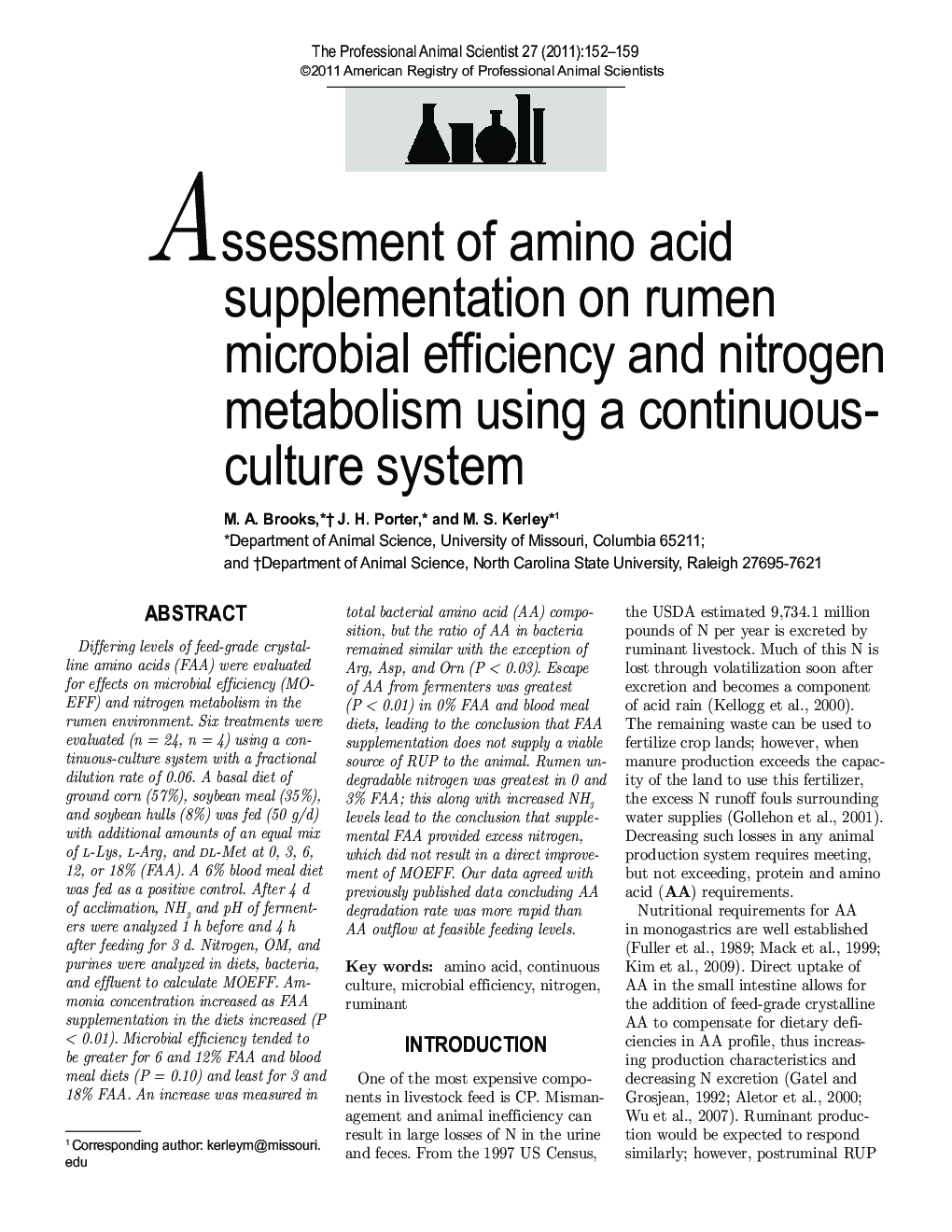| کد مقاله | کد نشریه | سال انتشار | مقاله انگلیسی | نسخه تمام متن |
|---|---|---|---|---|
| 2454146 | 1110373 | 2011 | 8 صفحه PDF | دانلود رایگان |
عنوان انگلیسی مقاله ISI
Assessment of amino acid supplementation on rumen microbial efficiency and nitrogen metabolism using a continuous-culture system
دانلود مقاله + سفارش ترجمه
دانلود مقاله ISI انگلیسی
رایگان برای ایرانیان
کلمات کلیدی
موضوعات مرتبط
علوم زیستی و بیوفناوری
علوم کشاورزی و بیولوژیک
علوم دامی و جانورشناسی
پیش نمایش صفحه اول مقاله

چکیده انگلیسی
Differing levels of feed-grade crystalline amino acids (FAA) were evaluated for effects on microbial efficiency (MOEFF) and nitrogen metabolism in the rumen environment. Six treatments were evaluated (n = 24, n = 4) using a continuous-culture system with a fractional dilution rate of 0.06. A basal diet of ground corn (57%), soybean meal (35%), and soybean hulls (8%) was fed (50 g/d) with additional amounts of an equal mix of l-Lys, l-Arg, and dl-Met at 0, 3, 6, 12, or 18% (FAA). A 6% blood meal diet was fed as a positive control. After 4 d of acclimation, NH3 and pH of fermenters were analyzed 1 h before and 4 h after feeding for 3 d. Nitrogen, OM, and purines were analyzed in diets, bacteria, and effluent to calculate MOEFF. Ammonia concentration increased as FAA supplementation in the diets increased (P < 0.01). Microbial efficiency tended to be greater for 6 and 12% FAA and blood meal diets (P = 0.10) and least for 3 and 18% FAA. An increase was measured in total bacterial amino acid (AA) composition, but the ratio of AA in bacteria remained similar with the exception of Arg, Asp, and Orn (P < 0.03). Escape of AA from fermenters was greatest (P < 0.01) in 0% FAA and blood meal diets, leading to the conclusion that FAA supplementation does not supply a viable source of RUP to the animal. Rumen undegradable nitrogen was greatest in 0 and 3% FAA; this along with increased NH3 levels lead to the conclusion that supplemental FAA provided excess nitrogen, which did not result in a direct improvement of MOEFF. Our data agreed with previously published data concluding AA degradation rate was more rapid than AA outflow at feasible feeding levels.
ناشر
Database: Elsevier - ScienceDirect (ساینس دایرکت)
Journal: The Professional Animal Scientist - Volume 27, Issue 2, April 2011, Pages 152-159
Journal: The Professional Animal Scientist - Volume 27, Issue 2, April 2011, Pages 152-159
نویسندگان
M.A. Brooks, J.H. Porter, M.S. Kerley,